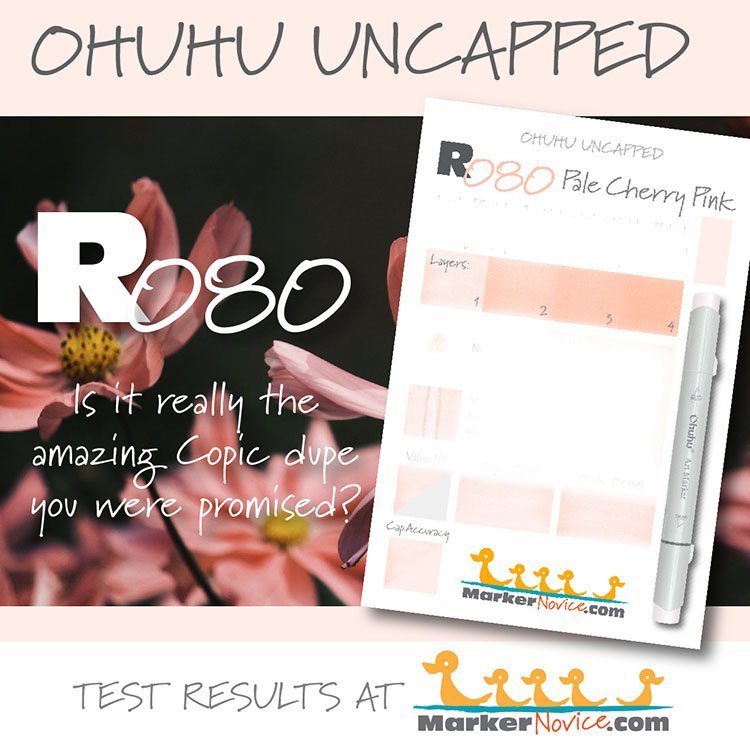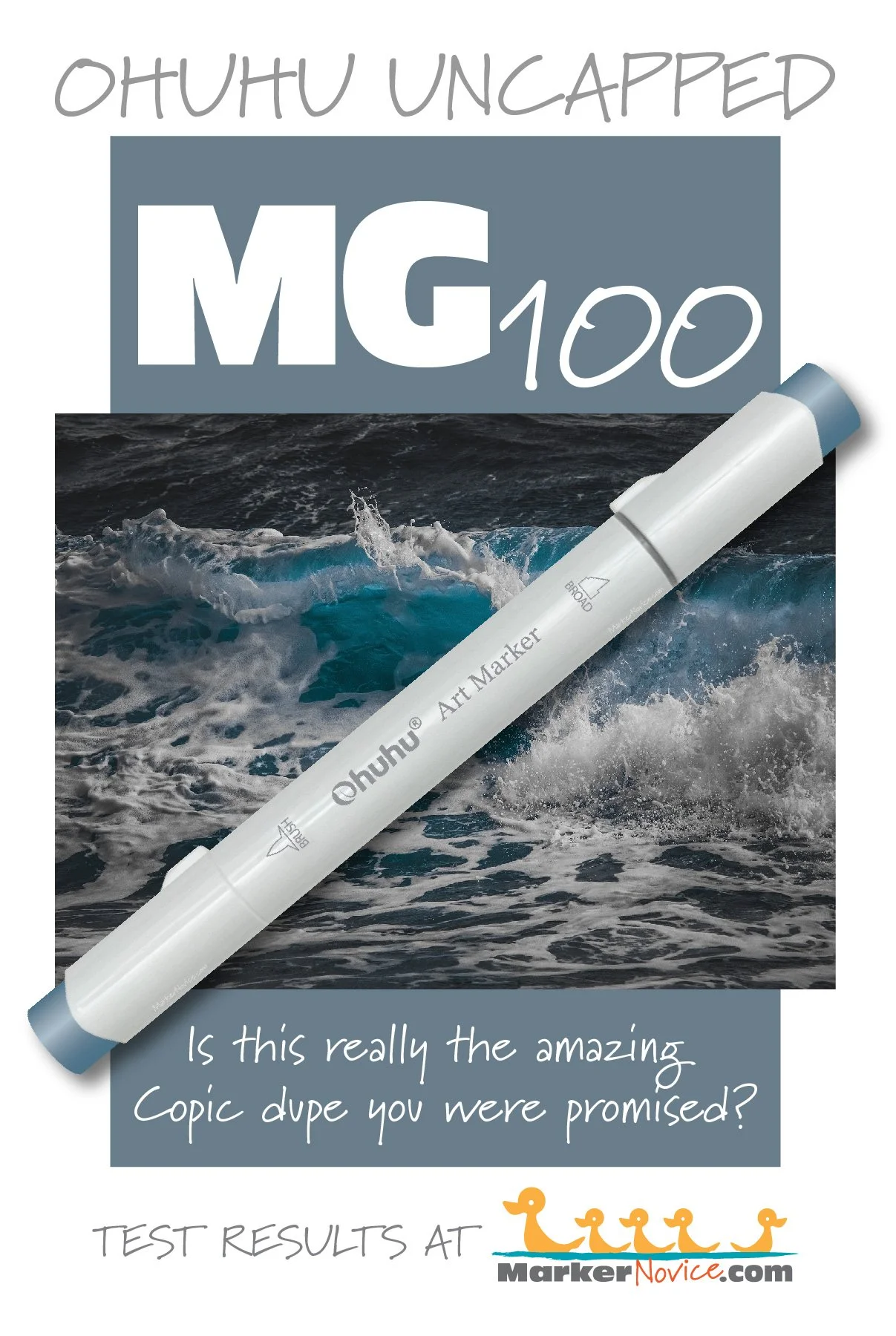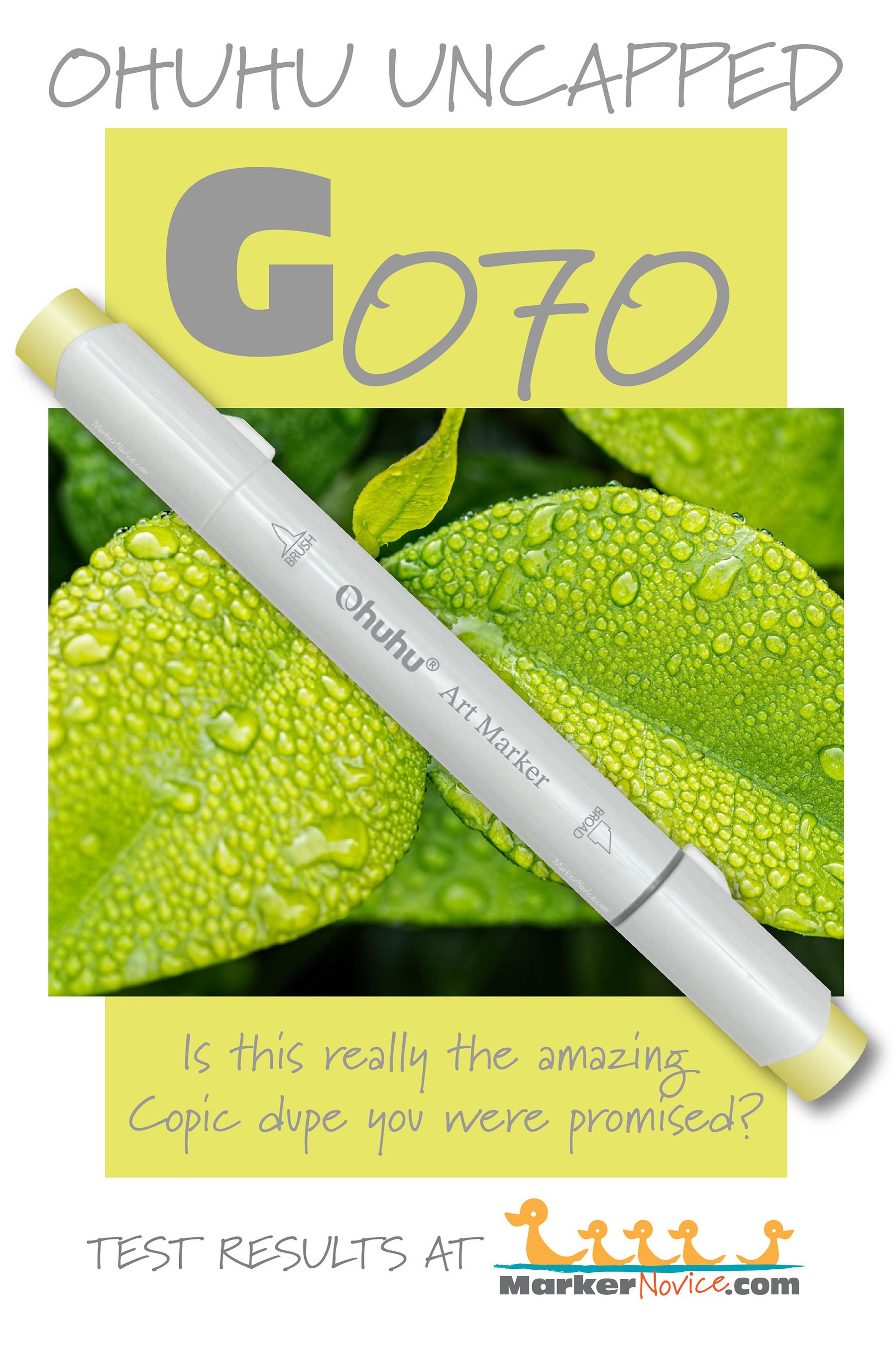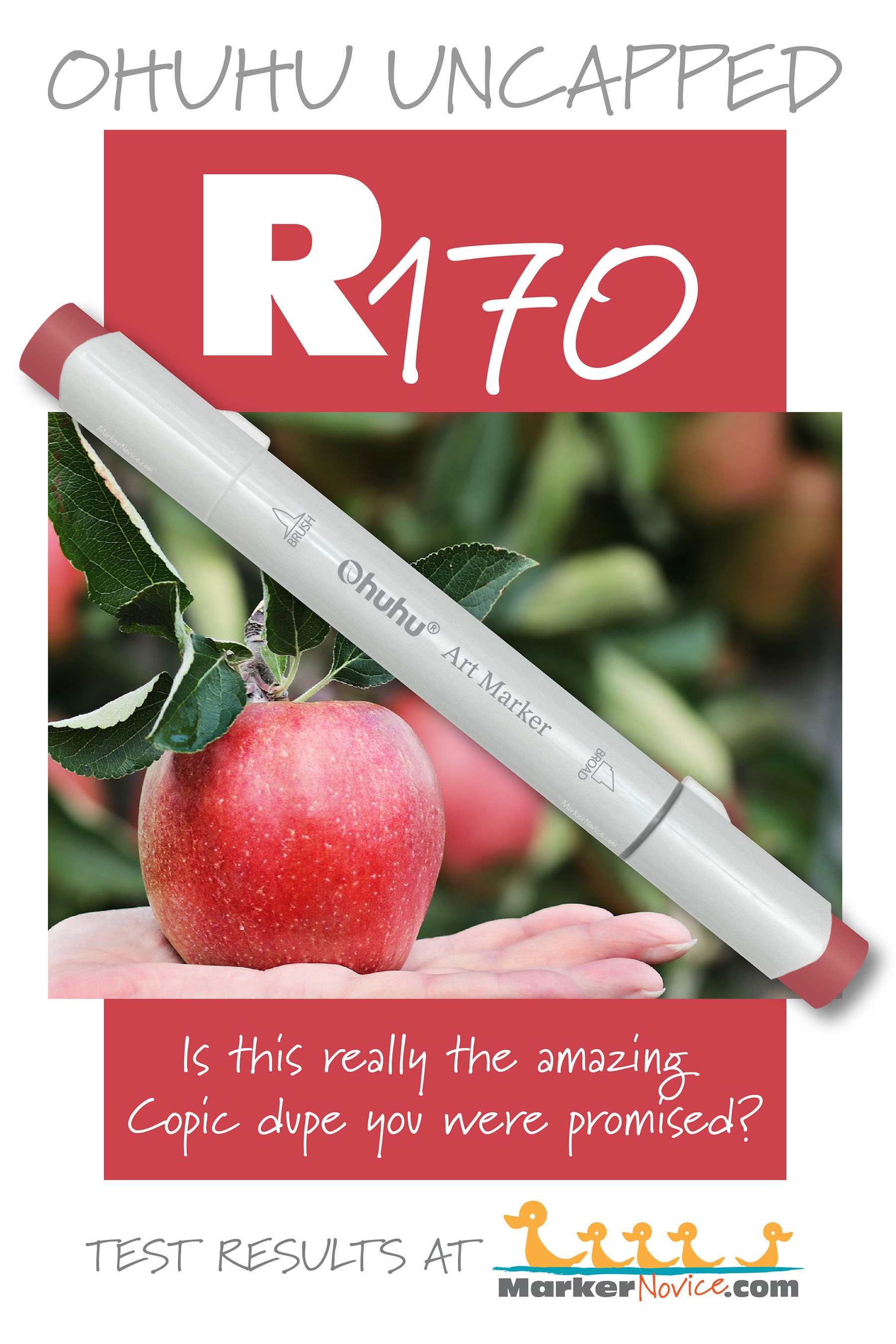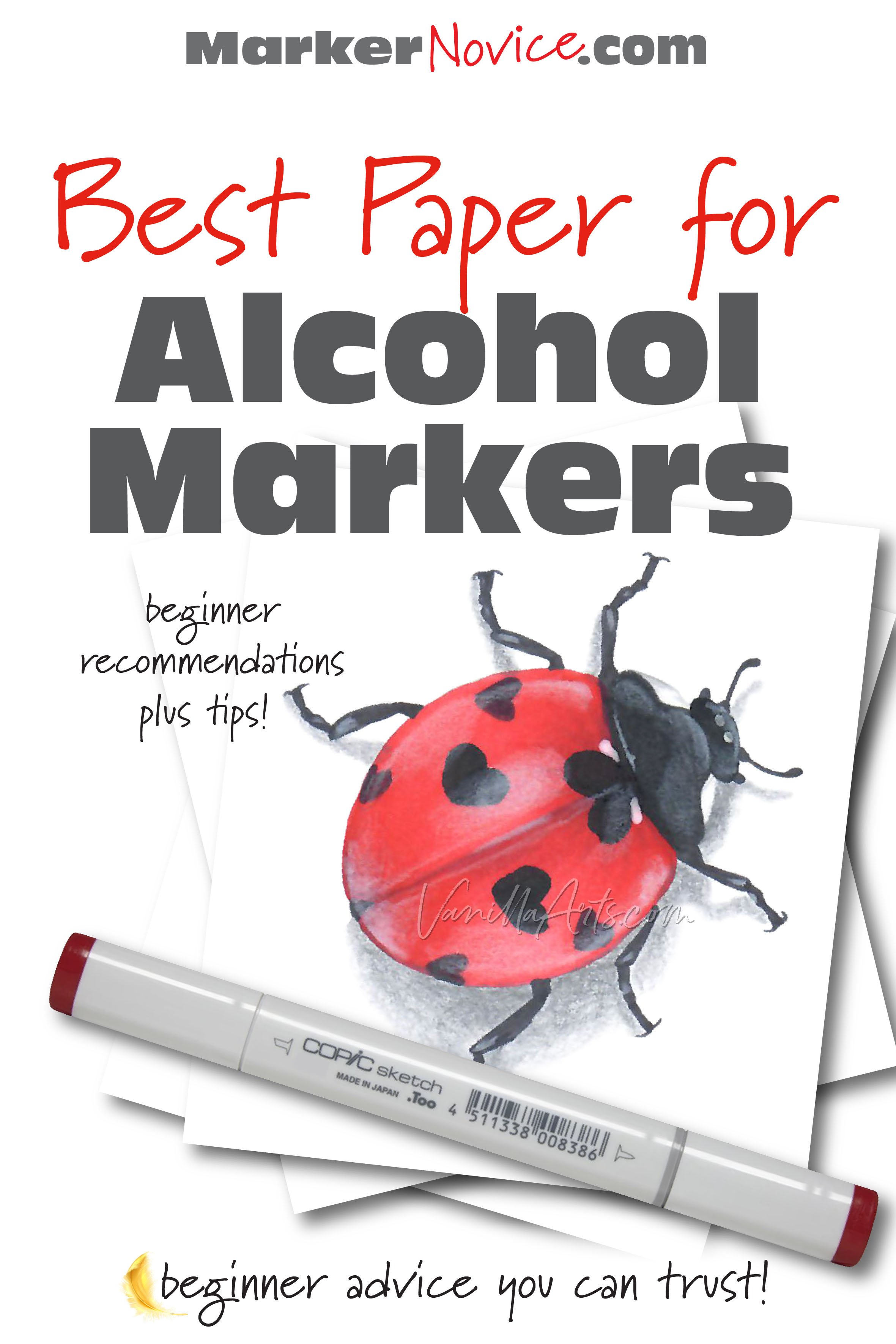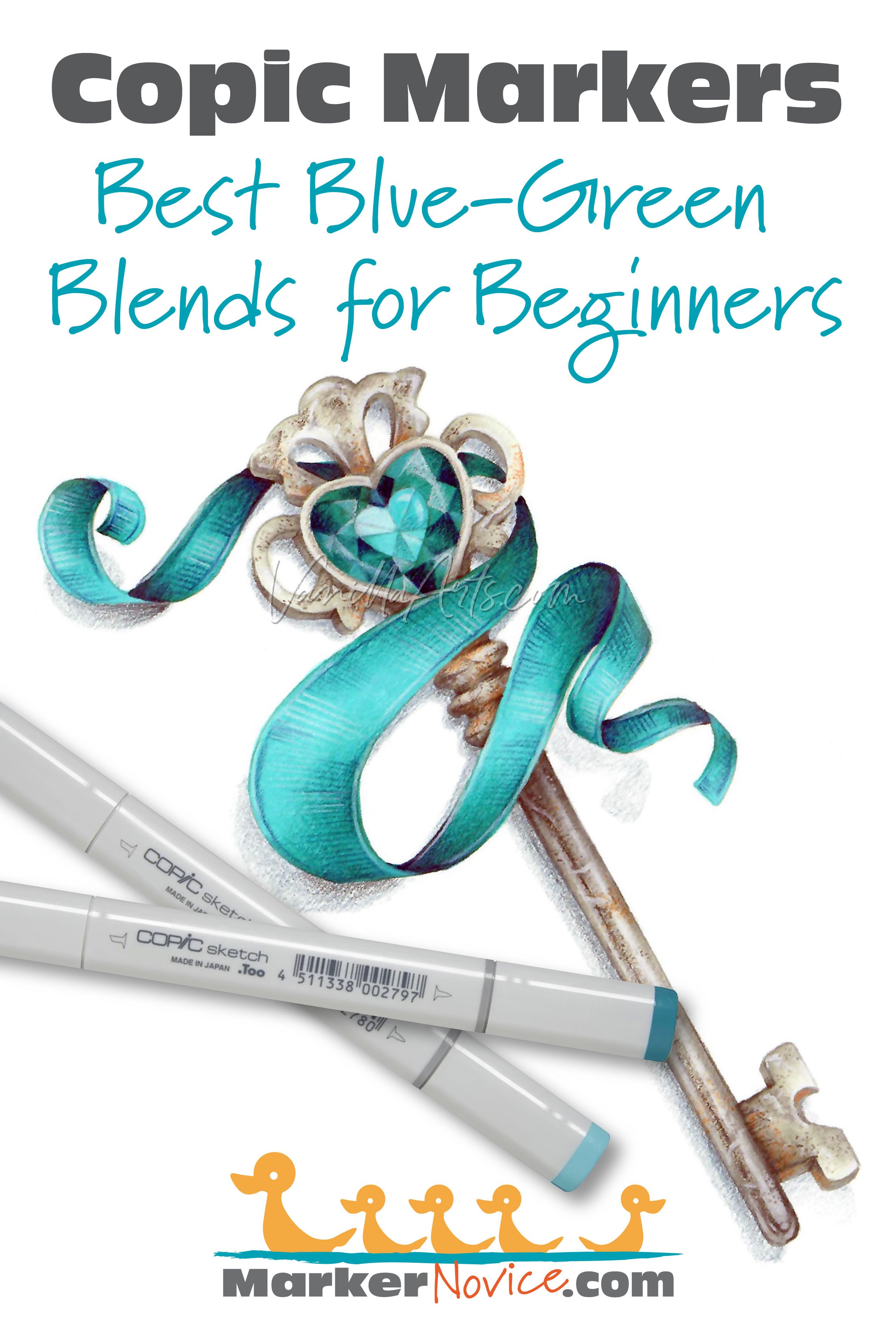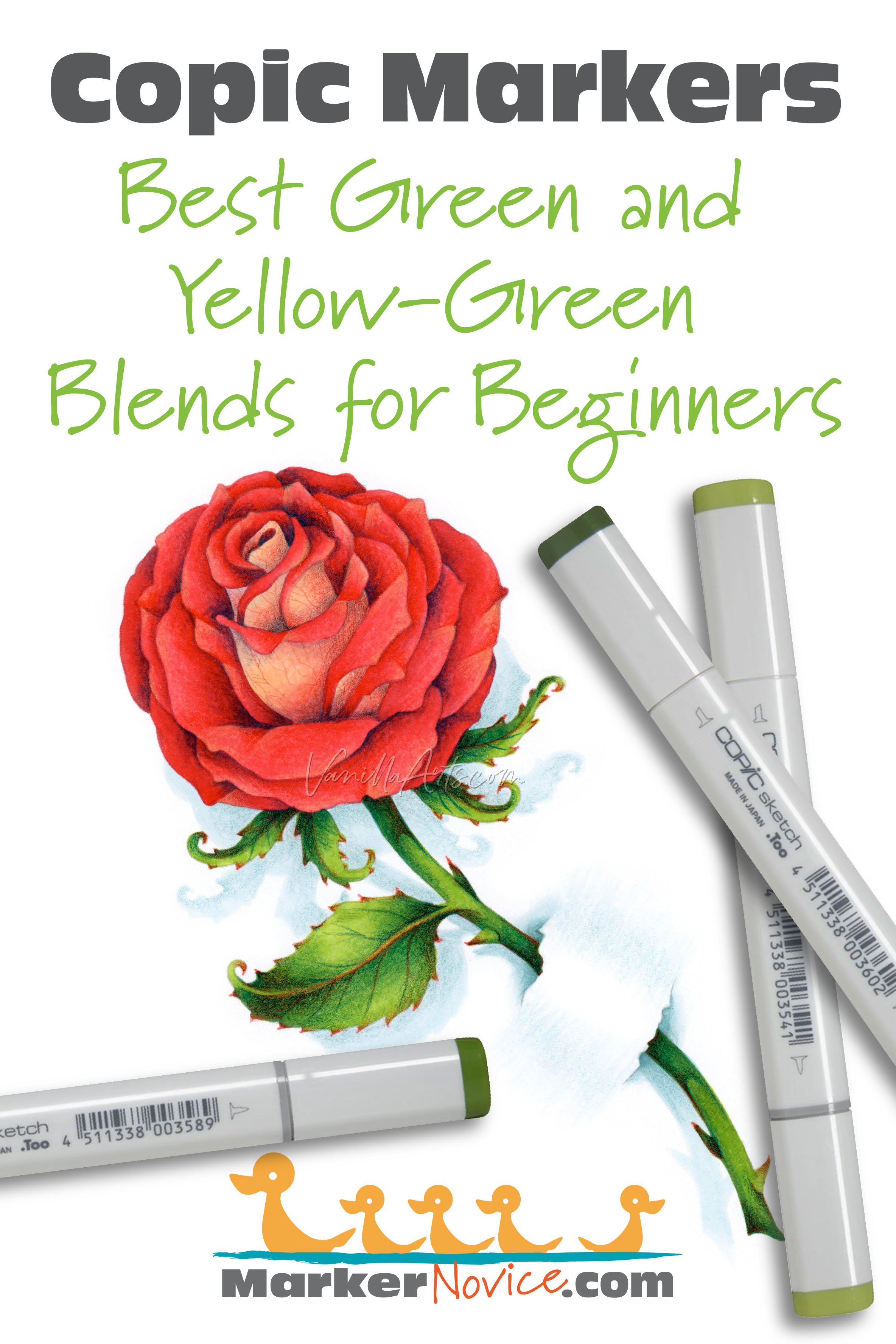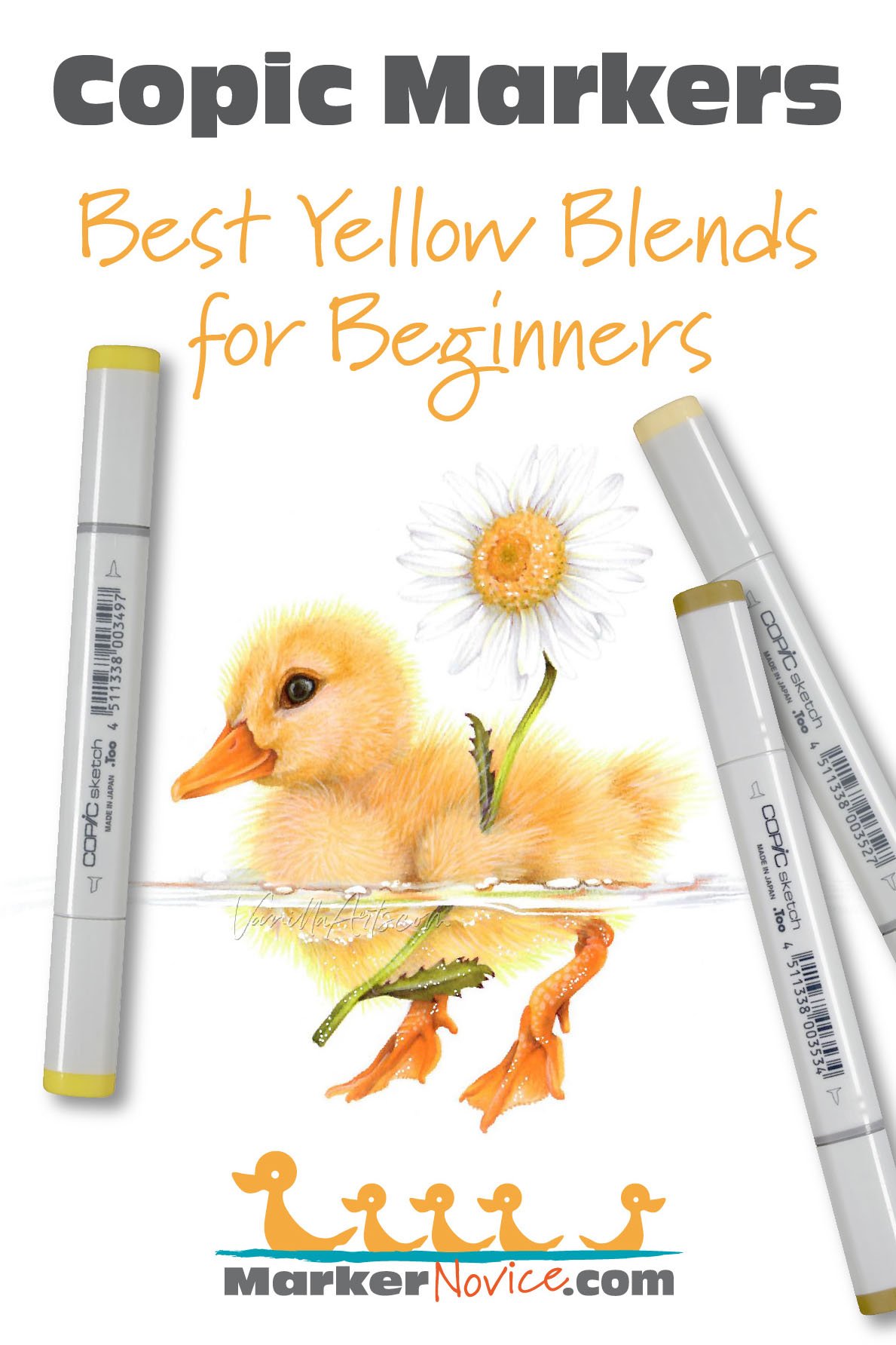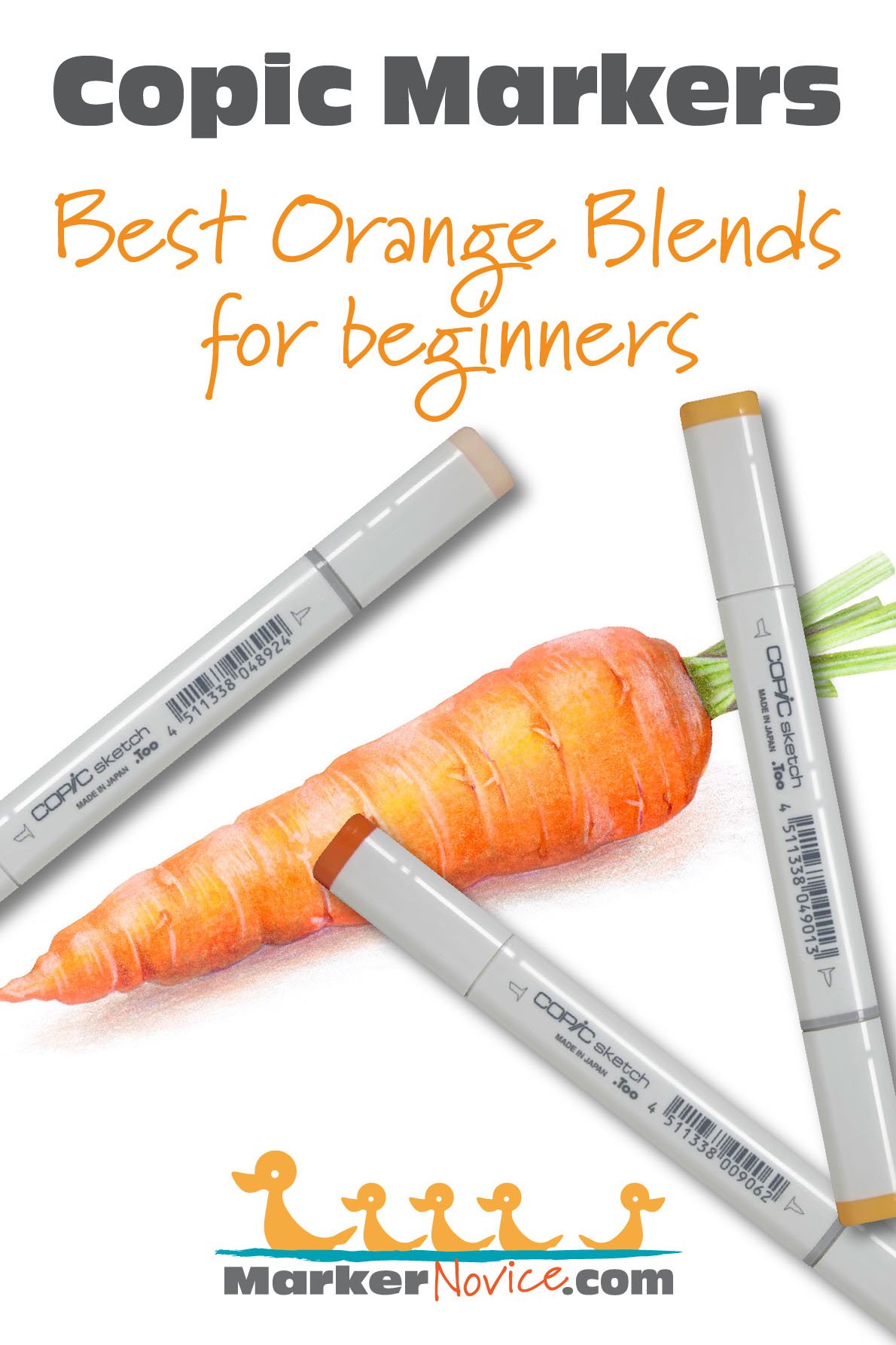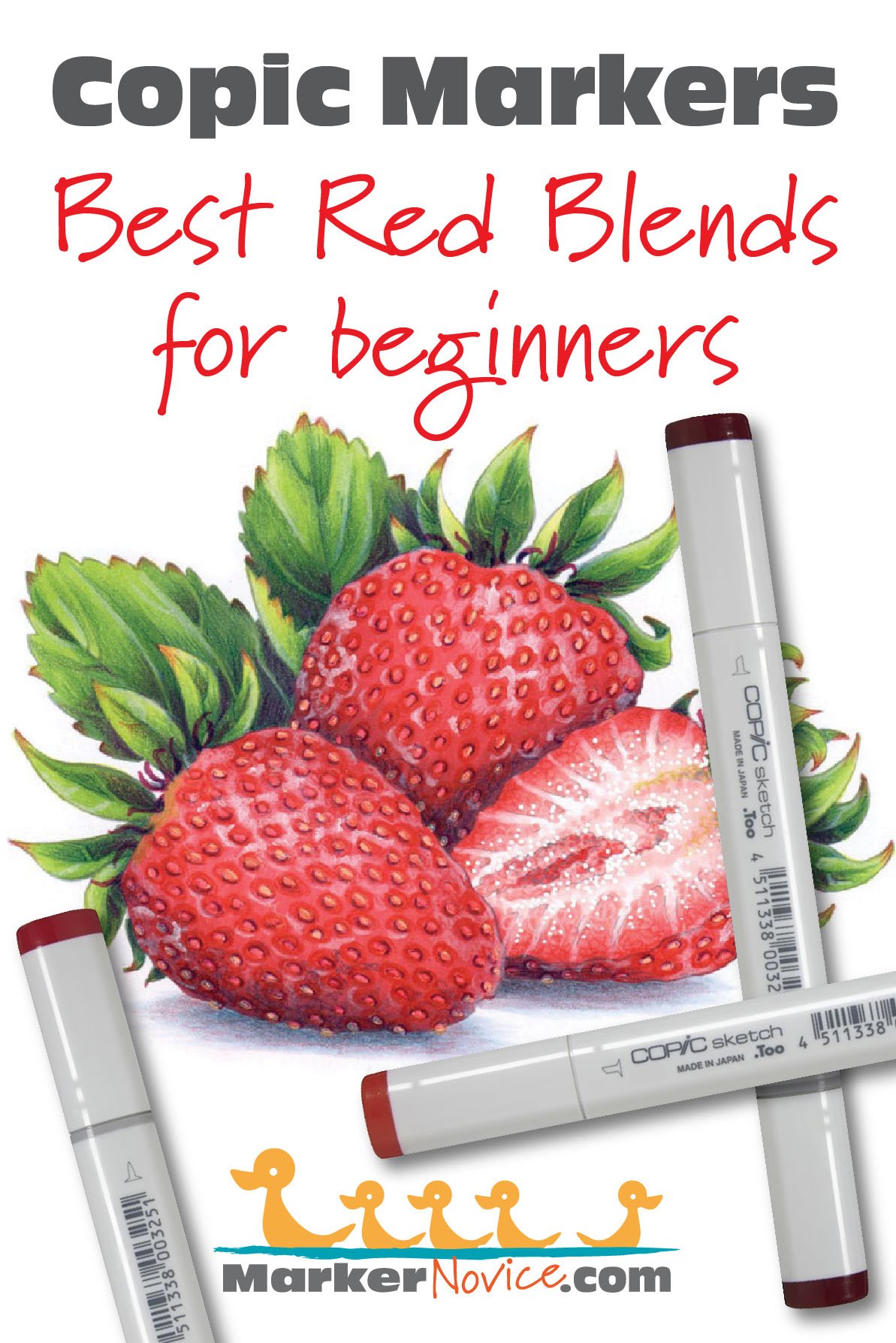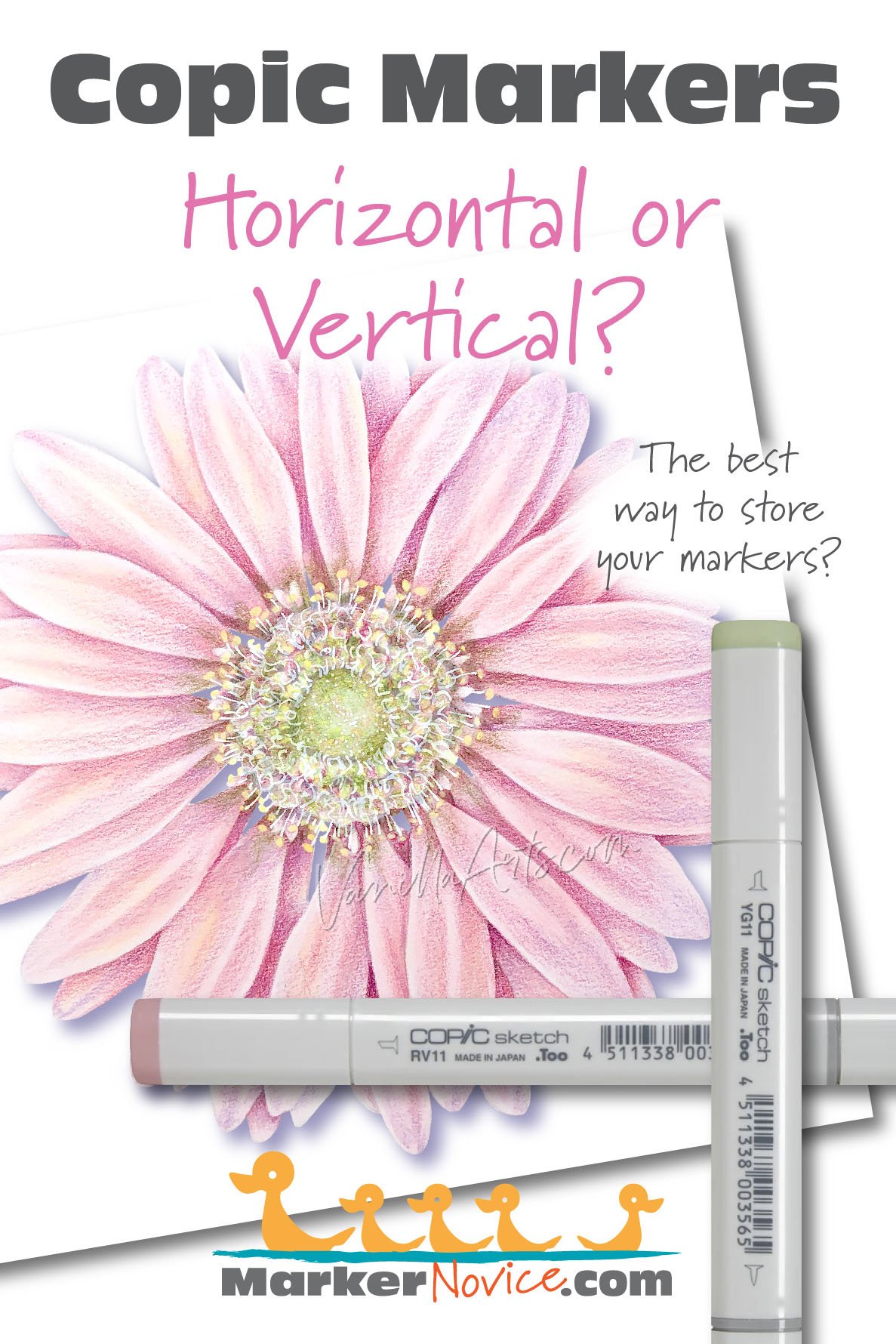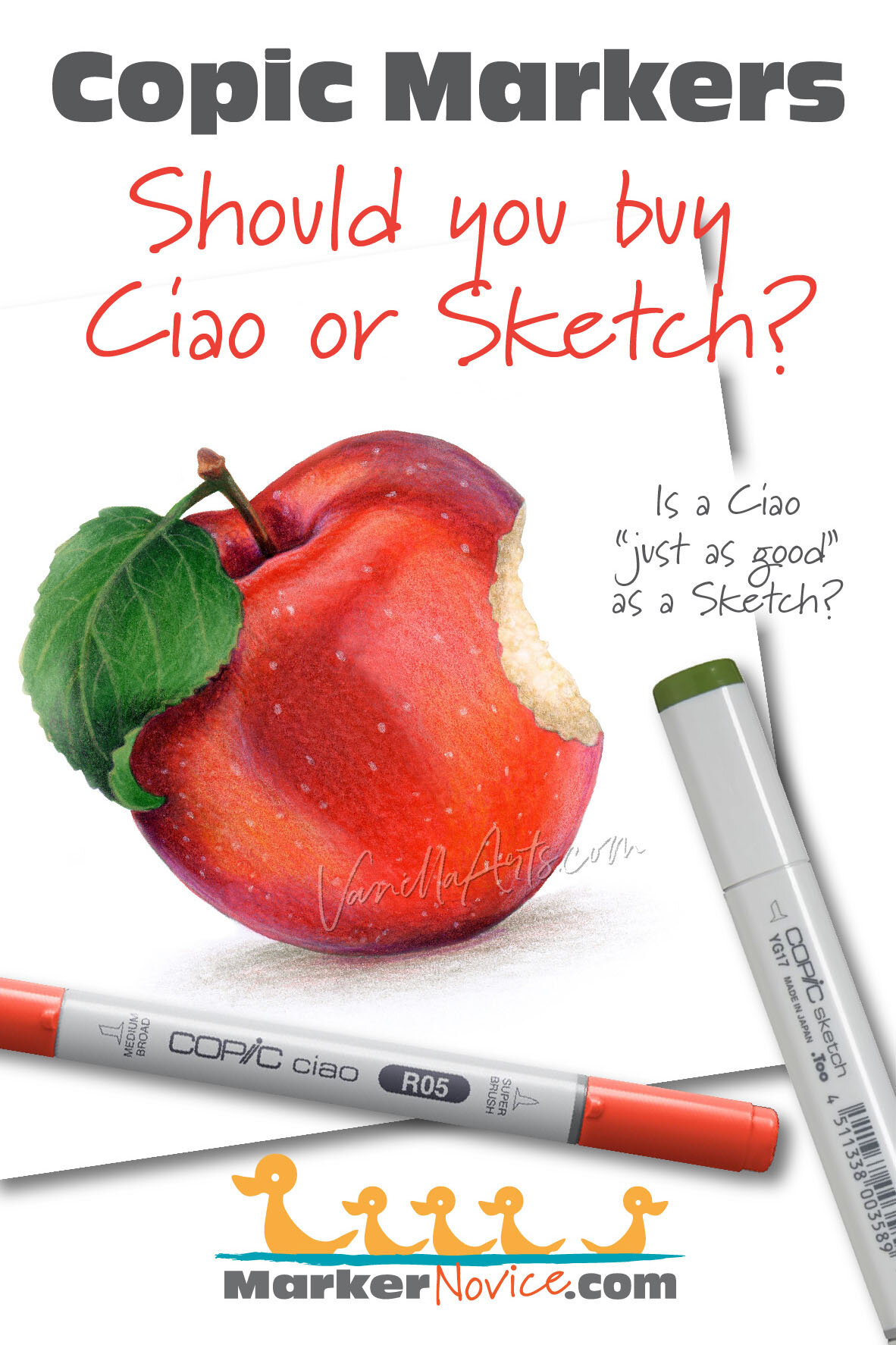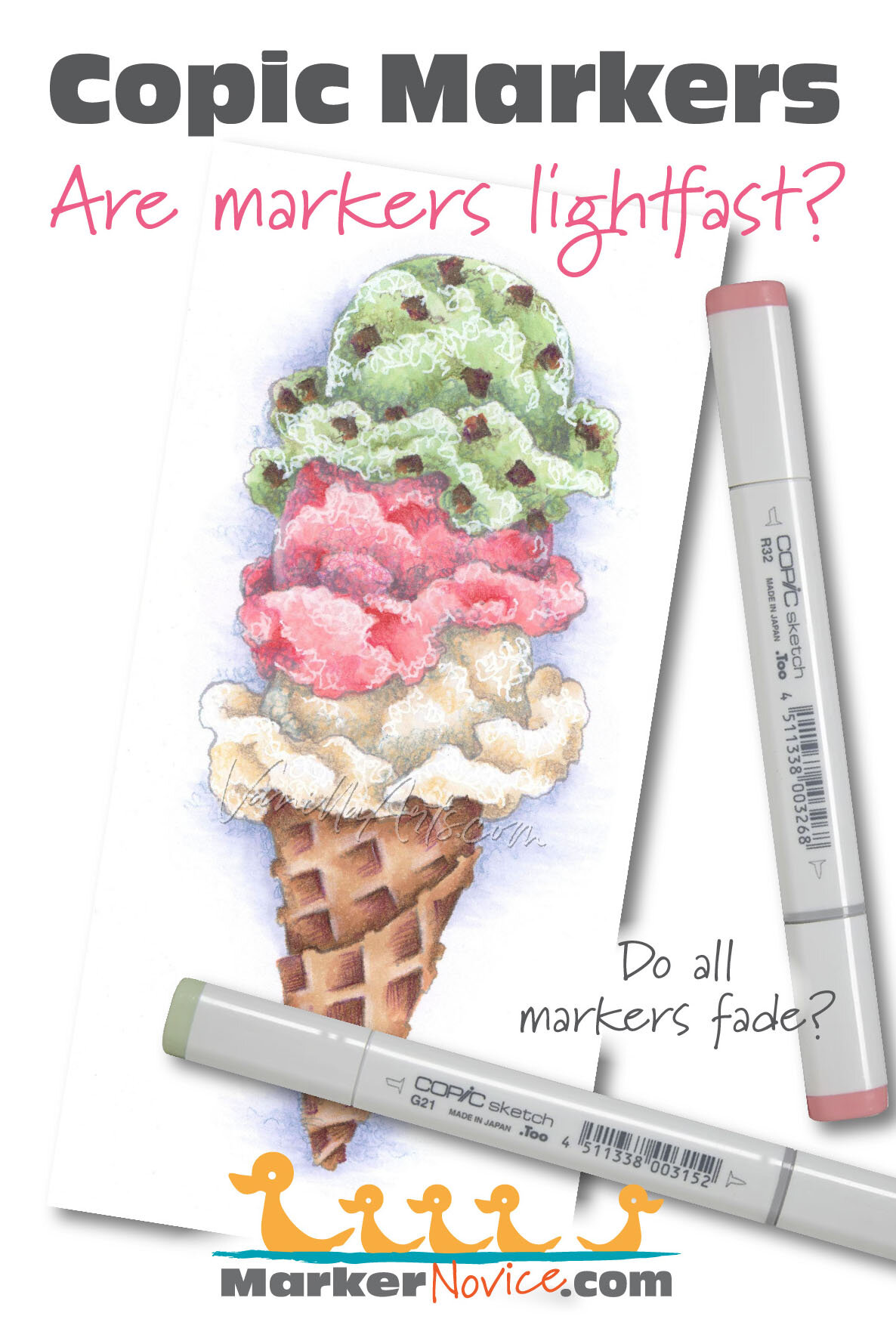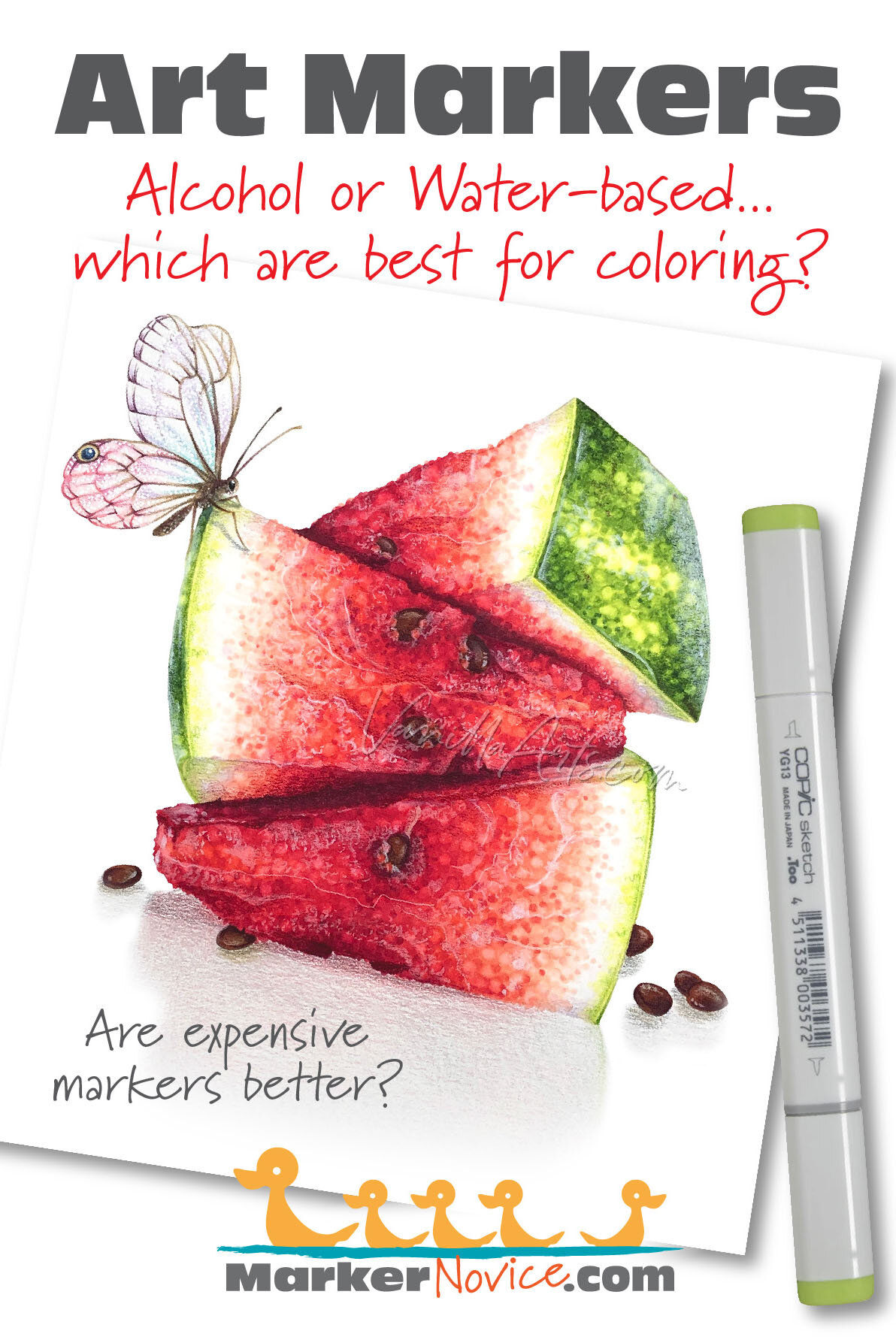You were told “Ohuhu is the Copic slayer! They’re like Copic Markers but better!”
Is it true?
Every Ohuhu Marker has different characteristics based upon its unique ink formula. No matter how great they say the marker is, test results do not lie.
So are Ohuhu markers as great as you’ve heard?
Let’s look at Ohuhu R080 to find out.
WARNING: Ohuhu markers have numbers on the cap but not on the body of the marker. We do not recommend coloring with both caps off due to the risk of accidentally placing the wrong caps on a marker.
Test results: Ohuhu R080 Pale Cherry Pink
REFILL WARNING! At this time, Ohuhu does not sell refills for R080. To date, you must purchase a new marker when your current marker runs dry. Ohuhu is deceptive when they advertise that their markers are refillable. In reality, they only offer 50 refills in a line of 320+ markers. See Ohuhu’s current list of refills here.
Temperature: A highly diluted warm red
Resemblance: Vermilion watercolor
Name: “Pale Cherry Pink” isn’t a terrible name but it will bother any artist who knows this color is light red rather than pink. Pinks are part of the Magenta or “RV” family. Light reds are warmer and have almost a peachy vibe to them. Light red is not pink.
Actual Value: N2
Unlike Copic, Ohuhu does not measure value— this is a glaring deficiency which makes finding blending combinations harder than it has to be!
All Copics are measured on a Neutral Gray value scale. The last number on the Copic cap indicates the value. We’re using the Copic scale to measure Ohuhu until Ohuhu releases a reliable value scale.
Cap Accuracy: The plastic on an Ohuhu Honolulu R080 is a close match to one coat of R080. The colored plastic is a bit translucent though which can make the color indicator look greyish at times.
Copic Substitution: Ohuhu R080 is similar to Copic R00.
Note: similar colors rarely behave the same way. At the time of writing, I have not fully tested R00. I’m speaking from experience only. Most markers this pale are easy to work with, they blend and layer well because there’s just not a lot of colorant in the color. Ohuhu’s R080 makes me worry though. See the “Buildup” and “Overinking” categories below for more information on my concerns.
Buildup: R080 reaches a maximum value in the blotchy areas at only two coats. Now reflect on how many layers you typically use to apply a skin-colored blending combination and then blend it smooth. Can you color a face with only two layers of ink?
Overinking: We do not recommend using more than 2 coats of R080.
Let’s be honest, most people will use R080 for coloring skin and faces. The people who will use R080 for skin are usually beginners and weekend hobbyists because trained artists tend to use fewer literal skin colors for skin. Because of this, the people using this marker for skin are the least prepared to deal with the blotches and problems R080 creates with just a second layer.
The average skin blending session likely involves at least four layers of ink. Now look at the color above for four layers of R080. Have you ever met anyone with skin that color?
For both reasons, I do not recommend the use of R080.
Shattering: R080 did not shatter and is likely made with only one dye in the formula.
Chromatography testing shows this ink’s behavior when it comes in contact with #0 Colorless Blender (solvent). High shattering colors may leak unexpected color when you make corrections or attempt to blend with any color that has a high solvent to colorant ratio. Shattering is not bad, it’s just something to be aware of.
Staining: Most pale ink colors do not stain but of the palest colors, any red will stain more than the others. R080 is slightly staining but not any more so than similar markers in other brands.
With alcohol markers, a staining ink is generally a sign of a low quality ink. Staining inks bond to the paper fibers and are reluctant to release. Staining inks make blending harder than it has to be!
Lift: This is where R080 fails to work as well as Copic ink. First, we had the layering issues cited above. Now look at the dark trench sides created during the lift testing. Do you want to create stripes like this on a face?
See staining swatch. Sample was given 6 stripes of #0 Colorless Blender, drying between each stripe. Results indicate how much lifting you can expect.
Lightfast: R170 faded about 40% during the test period. This is excessive and the sign of low-quality ingredients.
Samples were swatched on X-Press It Blending Card. 1 layer of ink was exposed to windowsill sunlight for 21 days. Approximately 10 hours of sun per day based on weather conditions. Note: we do not recommend displaying original marker art under these conditions.
Ink Color Family: The “R” in R080 indicates that this marker is part of the R red family. In my opinion, this is a good placement for this color although I can easily see someone arguing that this color is better suited to the YR family.
Given that the use of two letters (YR) typically indicates a blended ink (yellow ink + red ink), and the fact that R080 seems to be a single source ink (see shattering test), I think this marker is solidly in the R family.
The Ohuhu numbering system is complete garbage and doesn’t always make sense. Some orange and magenta markers are hidden in the R family. Be warned, when it comes to other color families, you can not trust anything you read on an Ohuhu cap.
Cap Numbering: The R 0X0 group is just three markers:
R050 is a light salmon color which almost glows
R070 is a medium Carmine color
R080 is skintone-ish
These inks are NOT related to each other, not arranged chromatically, and not arranged according to value or temperature. They don’t even work as a blending group. Ohuhu dumped these colors together without thinking because they don’t care about their numbering system.
As stated above, the Ohuhu numbering system makes no sense. The markers are not arranged in chromatic order so you can not trust the numbers to tell you whether this marker is lighter or darker than other Ohuhu markers with similar numbers.
I’m still early in the Ohuhu testing process. I will add more info to this article as I learn more and when I spot behavioral patterns.
From what I’ve learned so far, I will not be working with Ohuhu markers and I will discourage students from using them in my classes. They’re simply not worth the frustration.



